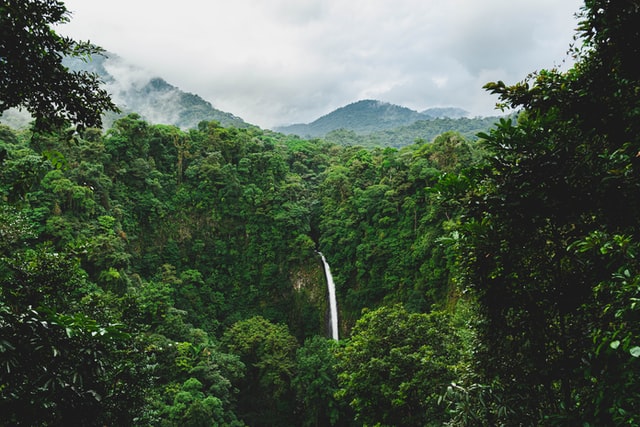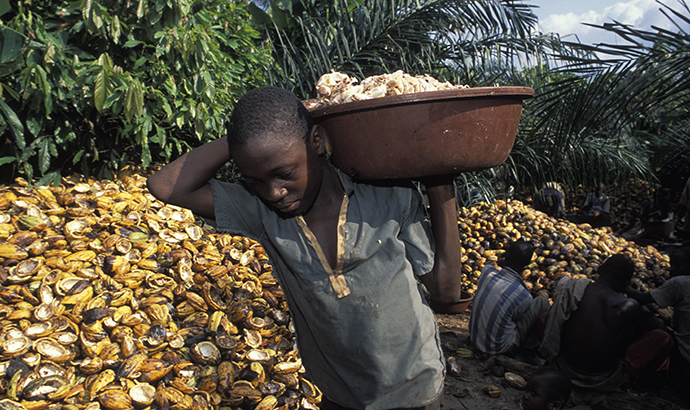Our Planet
Industry sustainability
Cocoa and child slavery
Palm oil & deforestation

Cocoa is a major crop and so its environmental impact is important. There are many organisations with an interest in improving the impact of cocoa and the human rights and sustainability of those subsistence farmers that grow most of the crop.
The blog “What’s happening in the cocoa industry in 2023’ details the latest initiatives and is a source for some optimism. Some headline items:
· The price of dried beans has increased more than 50% in 2023 - a result of a perceived looming cocoa shortage.
· World Bank funding to make Ghana’s cocoa industry more attractive and sustainable, including involving more women
· The 2023 EU Deforestation Regulation

Child working on Ivory Coast cocoa plantation
According to Sona Ebai, the former Secretary General of the Alliance of Cocoa Producing Countries: ‘I think child labor cannot be just the responsibility of industry to solve. I think it's the proverbial all-hands-on-deck: government, civil society, the private sector. And there, you really need leadership.’

On April 10, 2020 Reuters published ‘Child labour still prevalent in West Africa cocoa sector despite industry efforts’. The article indicated, while the draft of a report funded by the US Department of Labor is yet to be finalised, reducing child labour is falling short of the targets set in 2010 when companies including Mars, Hershey, Nestle and Cargill pledged to reduce the worst forms of child labour in their West African supply chains by 70 per cent by 2020. The report estimated that approximately 2.1 million children in the two countries’ cocoa sectors are engaged in child labour which includes work by under 12s and by older children that is hazardous or exceeds a certain number of hours. This is unchanged from the 2016 report of Brian O’Keefe. Reuters noted the Ghana cocoa regulator Cocobod spokesman Fifi Boafo rejected the report’s findings.

Palm oil has a history going back 5,000 years. Recently land clearing for palm oil plantations has become a serious environmental issue.
Palm oil is cheaper than cocoa butter and is used as a substitute in some chocolate. Check the label!
The highly saturated nature of palm oil renders it solid at room temperature in temperate regions making it a cheap substitute for butter or hydrogenated vegetable oils in uses where solid fat is desirable, such as pastry dough and baked goods production.
End Slavery Now
International Labour Organisation
Wikipedia
Ange Aboa & Aaron Ross, ‘Child labour still prevalent in West Africa cocoa sector despite industry efforts: report’, Reuters, US, 10 April 2020
Brian O’Keefe, ‘Bitter Sweets’, Fortune, US, 1 March 2016
Kareem Kysia and Shanto Sadhu 'Assessing Progress in Reducing Child Labor in Cocoa Growing Areas of Côte d’Ivoire and Ghana', October 2020
